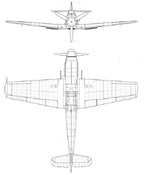Since every discussion about the what-if LW fighters often turns into disusing the laternative Bf 109s, let's make a dedicated thread for the fighter. So let's start the .. book from the middle of it 
Some suggestions:
- keep the clean basic 109F-4/G-2 layout (retractable U/C, no HMG installation, no gondola weapons in the West),
- add the wheel well covers,
- a decent within-the-wing cannon installation should be explored by 1942
- test the ram air intake in the position like the He 100 had, for the lower drag
- retrofit the DB engines on the captured Soviet fighters, and see just how good/bad the Bf 109 still is vs. the later designed fighters
Yes, that's a good point, if you can make it work by using the 605. But how do you do something substantially better than the 109 while using the same engine? Some Mustang-level aero wizardry? Is Messerschmitt up to such a task?
Some suggestions:
- keep the clean basic 109F-4/G-2 layout (retractable U/C, no HMG installation, no gondola weapons in the West),
- add the wheel well covers,
- a decent within-the-wing cannon installation should be explored by 1942
- test the ram air intake in the position like the He 100 had, for the lower drag
- retrofit the DB engines on the captured Soviet fighters, and see just how good/bad the Bf 109 still is vs. the later designed fighters

